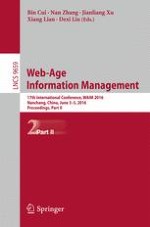This two-volume set, LNCS 9658 and 9659, constitutes the thoroughly refereed proceedings of the 17th International Conference on Web-Age Information Management, WAIM 2016, held in Nanchang, China, in June 2016.
The 80 full research papers presented together with 8 demonstrations were carefully reviewed and selected from 266 submissions. The focus of the conference is on following topics: data mining, spatial and temporal databases, recommender systems, graph data management, information retrieval, privacy and trust, query processing and optimization, social media, big data analytics, and distributed and cloud computing.
